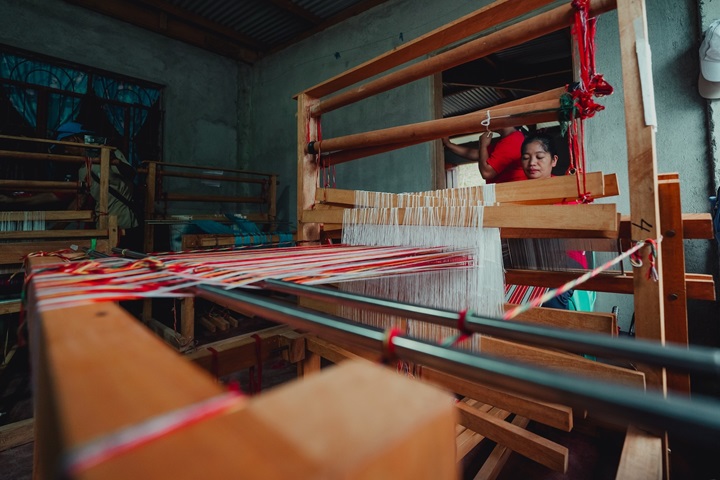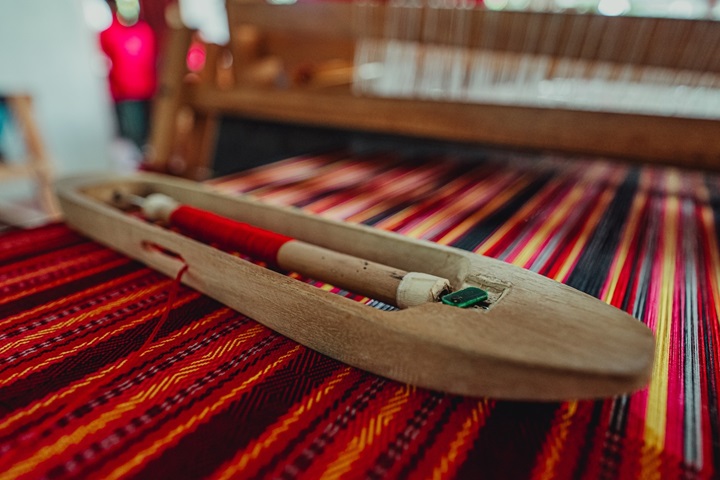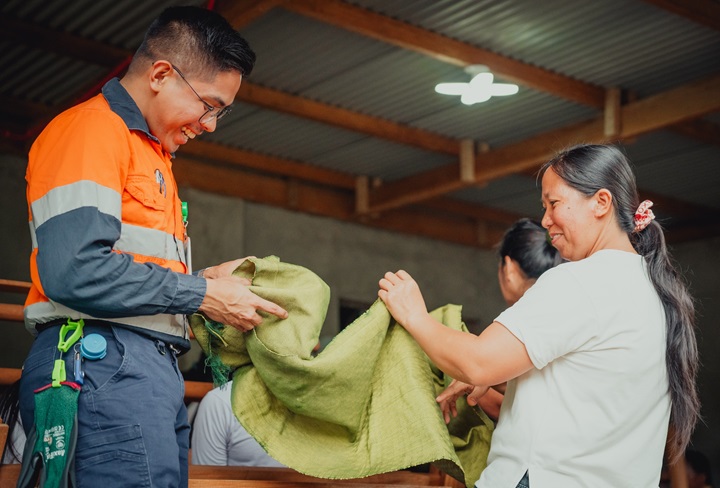Nowadays, our streets and public places are overwhelmed with fast fashion – low-priced stylish clothing based on current trends bought from retail stores. But with the emergence of the nostalgia trend in today’s generation, people are now embracing back slow fashion as consumers value sustainability and quality.
With the rise of slow fashion, traditional loom weavers can take advantage of changing consumer behavior.
Traditional loom-weaving methods, practiced for centuries by indigenous peoples (IPs), is a sustainable approach to fashion as it opts to use locally sourced materials. Made with utmost care and precision, woven pieces reflect the hard work of its weaver.

We are rich in cultural expressions with close to 17 million indigenous people in the Philippines. But the United Nations Office for Project Services also points out that they are among the most disadvantaged people. Protecting indigenous culture and promoting the handloom weaving industry needs public, private, and civil society interventions.
In Barangay Capisaan in the upland town of Kasibu in Nueva Vizcaya, Alayan Pag-asa Abot-Palad Association of Women are trying to keep their Ifugao-Twali culture alive through weaving. They are among the pilot beneficiaries of the Loom Weaving Industry program of the Department of Trade Industry – Nueva Vizcaya (Region 2) in 2014.

Among the women weavers’ association’s products is the famous Ifugao shawl crafted in a chain rib weave with embroidered seams. These shawls are worn in various ways including as a skirt or as a scarf.
If you prefer a full attire, the Twali-Ifugao weavers also make skirts paying homage to ancestral woven patterns.

To increase their economic viability, Barangay Capisaan, Municipality of Kasibu, the Didipio Mine of OceanaGold (Philippines), Inc. and DTI Region 2 have forged the Mun-Abol (Maximizing Network and Unveiling Natural Talents through Acceleration of Business Opportunities and Livelihood) Project to strengthen the industry through upskilling, training and capital equipment financed through the Didipio Mine’s IP Culture Revitalization Program. The project’s name, “Mun-Abol” is an Ifugao term meaning “to weave.”

Kasibu Mayor Romeo C. Tayaban; Vice Mayor Alberto D. Bumolo Jr., represented by Sec. Manuel
Binwag; DTI Provincial Director Marietta B. Salviejo; and Atty. Joan Adaci-Cattiling, General
Manager of OGPI, represented by Ms. Desiree Baldevino, External Affairs and Communication
Superintendent.
With an established front store named Mun-Abol Capisaan Weaving, the project supports 16 women weavers, most of whom are mothers, with an additional source of income.
Barangay Capisaan is among the 11 communities supported by the Didipio Mine’s social development and management program.
“The Mun-Abol Project is more than just a social enterprise; it’s a vibrant tapestry of culture, creativity, and community empowerment. Rooted in the rich traditions of Indigenous People, this project weaves together threads of heritage and innovation to support the orange economy and revitalize creative culture,” Vincent Flores, Didipio Mine Community Development Supervisor, said. Apart from its contribution in the Mun-Abol Project, OceanaGold (Philippines), Inc. also established a scholarship program for college students from various indigenous communities in Nueva Vizcaya and Quirino, and sponsors community trainings of indigenous dances for the youth keeping the culture alive.
“This project increases our livelihood sources while transferring our knowledge of weaving to the next generation,” Capisaan Barangay Captain Patrick Batulon said.
So, if you ever come visit Nueva Vizcaya, be sure to visit Mun-Abol Capisaan Weaving’s shop in Kasibu or you can just send them a message on Facebook

